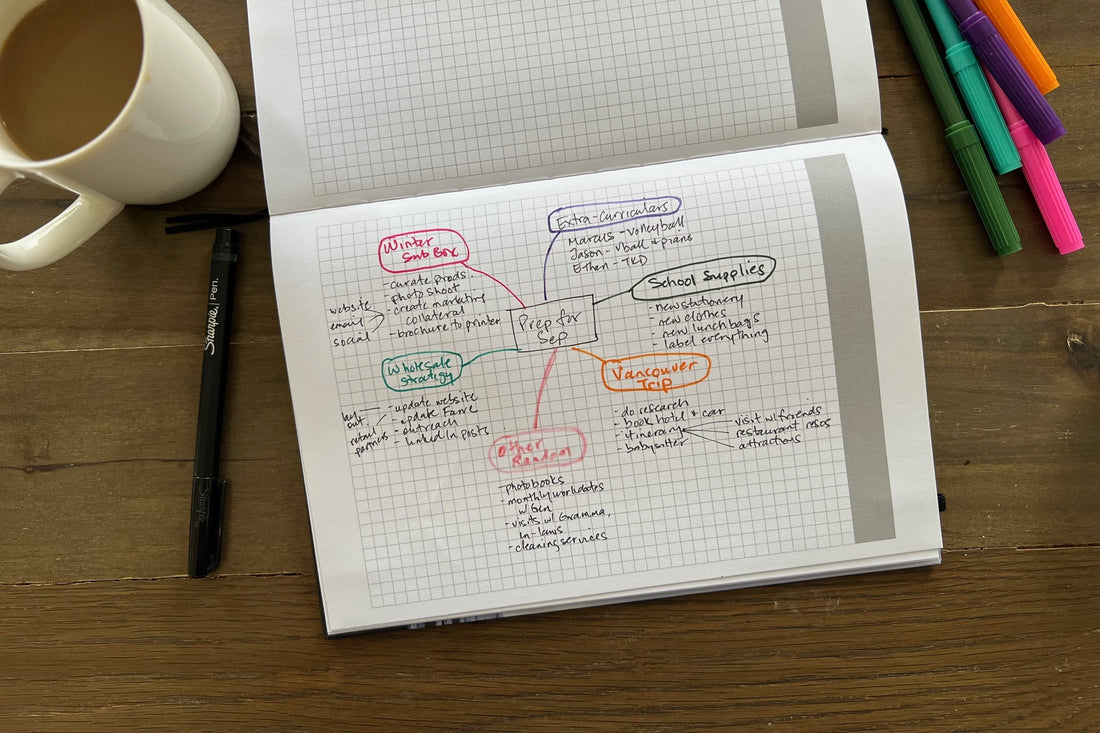
In today's fast-paced world, we are constantly bombarded with information, ideas, and thoughts. It can be challenging to keep track of everything and make sense of it all. That's where mind mapping comes in. Mind mapping is a technique that helps you organize your thoughts and ideas in a visual and creative way. In this blog post, we will explore the art of mind mapping and how you can use your notebook to organize your thoughts.
What is Mind Mapping?
A mind map is a visual representation of your thoughts and ideas. It is a diagram that helps you organize information around a central concept. Mind maps are a powerful tool for brainstorming, problem-solving, and organizing complex information. They allow you to see the big picture and the details at the same time. If you’ve ever tried brain dumps, think of mind mapping as an upgrade. It requires a bit more structure but isn’t necessarily more complex, as you can focus your mind map on more specific topics.
Why Use Mind Maps?
Mind maps are a great way to organize your thoughts because they are visual, creative, and flexible. They allow you to:
- See the big picture
- Organize complex information
- Make connections between ideas
- Generate new ideas
- Solve problems
- Remember information
- Improve your memory and concentration
How to Create a Mind Map
Creating a mind map is easy. All you need is a pen and paper or a notebook. Here are the basic steps:
- Start with a central idea – Write down the main topic or concept you want to explore in the center of the page. This could be a word, a phrase, or an image.
- Add branches – Draw lines radiating out from the central idea and write down related sub-topics or ideas. These branches can be connected to other branches to show relationships between ideas.
- Use keywords – Use keywords and short phrases instead of full sentences. This will help you focus on the main ideas and keep your mind map concise.
- Use colors and images – Use colors and images to make your mind map more visually appealing and memorable. This will help you remember the information better.
- Keep it simple – Keep your mind map simple and easy to read. Use clear and concise language and avoid cluttering your mind map with too much information.
Getting Started
- Use a dedicated notebook – Use a dedicated notebook for your mind maps. This will help you keep your mind maps organized and easy to find.
- Use different colors – Use different colored markers to differentiate between branches and sub-topics. This will make your mind map more visually appealing and easier to read.
- Use symbols and images – Use symbols and images to represent ideas and concepts. This will make your mind map more memorable and easier to remember.
- Revise any time – Ideas and circumstances can change, so feel free to revise and refine the ideas in your mind maps. Try using sticky notes to add additional information or ideas, and this will help you keep your mind map flexible and adaptable.
- Create mind maps for different themes – There is no need to create a mind map that encompasses everything that is going in your life! Break up your thoughts and ideas by creating different mind maps – for example, one for new business strategies vs another for social media ideas.
Mind mapping is a powerful tool for organizing your thoughts and ideas. And it truly isn’t difficult to get started. The first time I did one, I made rough notes on the side to jot down all my ideas into categories, then create a good version of the mind map in my notebook with colours. Overtime, I became more confident and was less attached to the need for perfection, and am so glad I have a notebook full of mind maps to refer to and get a view of my thoughts, ideas and plans all in one place. I encourage you to give it a try!

